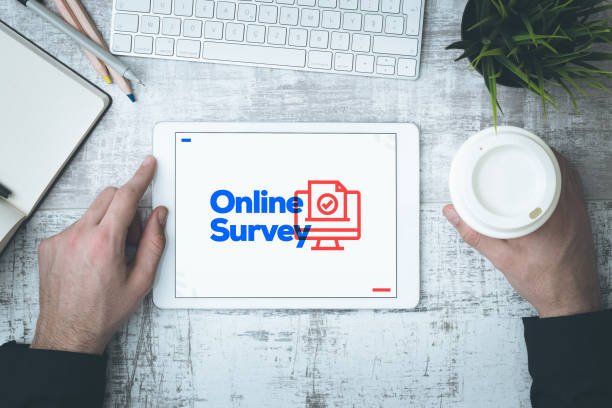Hey there! If you’ve ever tried your hand at crafting a survey, you probably know how tricky it can be to design one that truly captures the insights you need. It’s not just about tossing together a bunch of questions and sending them out into the ether. There’s an art and science to creating effective questionnaires that yield valuable data. Today, I’m excited to share some best practices on this journey to survey mastery.
Understanding Your Objectives
Every survey starts with a clear objective. What are you trying to understand or measure? Are you looking to gauge customer satisfaction, gather market research, or perhaps assess employee engagement? Understanding your primary goal will guide the questions you ask and shape your overall survey.
Tips for Defining Your Objectives:
-
Be Specific: Instead of a broad objective like “assess customer feedback”, narrow it down. For instance, “Understand how local restaurant customers perceive our delivery service” provides a clearer direction.
-
Consider Your Audience: Who will be taking your survey? Tailor your language and questions accordingly. Consider demographics like age, background, and familiarity with your topic.
-
Limit Your Goals: Focusing on one or two primary objectives will help keep your questionnaire short and relevant. Multiple aims can lead to confusion and disengagement.
Crafting Effective Questions
Now that you have a clear understanding of your objectives, it’s time to craft the questions that will help you meet those aims. This is where the magic happens!
Types of Questions
-
Closed-Ended Questions: These are questions with predefined answers. They can be multiple-choice, Likert scales, or yes/no questions. For example, “How satisfied are you with our service? (Very Satisfied, Satisfied, Neutral, Unsatisfied, Very Unsatisfied).” Closed-ended questions make analysis easier and provide quantitative data.
-
Open-Ended Questions: These allow for more detailed feedback. For instance, “What improvements would you like to see in our service?” They provide richer qualitative insights but can be harder to analyze.
-
Dichotomous Questions: This type typically offers two options, like “Yes” or “No”. They are great for simple decisions or to gauge a quick opinion.
Here’s a comparative look at the different types of questions:
| Question Type | Advantages | Disadvantages |
|---|---|---|
| Closed-Ended | Easy to analyze, quantifiable data | Limits depth and flexibility |
| Open-Ended | Rich, detailed responses | Difficult to analyze systematically |
| Dichotomous | Simple and quick responses | Oversimplifies complex opinions |
Question Wording: The Art of Clarity
Clarity is key when it comes to wording your questions. Here are some best practices:
-
Avoid Jargon: Use plain language that everyone can understand. Terms that are common in your industry might confuse respondents outside that field.
-
Be Concise: Keep your questions short and to the point. Long, convoluted questions can frustrate respondents and lead to inaccurate answers.
-
Use Neutral Language: Avoid leading questions that may bias a response. For example, instead of asking, “How great was our service?” consider, “How would you rate our service?”
-
Double-Barreled Questions: Avoid asking about two different issues in one question, like “How would you rate our quality and delivery?” This can confuse respondents and lead to unclear data.
Structuring Your Survey
The way you structure your survey can greatly influence the completion rate. Here are some structural tips:
-
Logical Order: Start with easy, engaging questions to warm up respondents. Follow up with more complex ones as they become invested. It’s like building rapport!
-
Grouping Questions: Combine similar questions into sections or themes. This creates a structured flow and helps respondents stay focused.
-
Use Progress Indicators: If your survey is longer, consider adding a progress bar. This informs respondents how much longer they have and can help reduce drop-off rates.
-
End with Open Feedback: Conclude with an open-ended question that allows participants to share any additional thoughts. This can provide insights that you might not have thought to ask about.
Survey Length Matters
The length of your survey can significantly impact response rates. Research shows that surveys longer than 10 minutes can see a drop-off in completion rates. An ideal survey length is often around 5-10 minutes.
Feedback from Users
I recently conducted an informal poll of survey respondents about their preferences. Here’s what they had to say:
-
Tom (32): “If a survey takes more than 5 minutes, I’m out. I just don’t have the time.”
-
Sarah (28): “I love open-ended questions at the end! It feels like I get to voice my real opinion.”
-
Jordan (45): “I appreciate progress bars. It makes me feel like I’m making headway.”
User feedback is invaluable in shaping your survey. Be sure to consider these insights when designing your next questionnaire.
Analyzing Your Results
Once you have garnered your responses, the next step is analyzing the data. This process can unfold into several phases, including:
-
Quantitative Analysis: For closed-ended questions, use statistical tools to visualize data through graphs and charts. This makes trends and patterns more apparent.
-
Qualitative Analysis: For open-ended responses, group similar themes or sentiments. This can be more subjective, but software tools can assist in categorizing responses efficiently.
-
Identify Insights: Look for key insights that align with your original objectives. These actionable insights will help inform your decisions going forward.
-
Reporting: Present your findings in a user-friendly manner. Clear visuals coupled with concise explanations can make your report easier to digest for stakeholders.
Here’s a simple example of how you might present findings:
| Question | % Very Satisfied | % Satisfied | % Neutral | % Unsatisfied | % Very Unsatisfied |
|---|---|---|---|---|---|
| Overall Service Satisfaction | 40% | 30% | 20% | 7% | 3% |
| Improvement Request for Delivery Timeliness | 25% | 35% | 25% | 10% | 5% |
Leveraging Technology
In today’s digital age, there are numerous tools available for designing and distributing surveys. Platforms like SurveyMonkey, Google Forms, and Qualtrics offer user-friendly interfaces that come with templates, analytics tools, and data export options.
They often include features like:
- Customizable Templates: Get started quickly with pre-built templates that can be tailored to fit your needs.
- Mobile Compatibility: Ensure a higher response rate by allowing users to respond on the device of their choice.
- Analytics Dashboard: Many platforms provide visual analytics dashboards to help you visualize your data.
Being familiar with these tools can significantly enhance your survey-making experience and yield better data collection.
Continuous Improvement
Every survey you create is an opportunity for learning. After analyzing your results, take the time to reflect on what went well and what can be improved for next time.
-
Seek Feedback: Ask your respondents for feedback on the survey experience itself. Did they find the questions engaging? Was the length appropriate?
-
A/B Testing: Experiment with different question wordings or structures to see which variations yield better results.
-
Benchmarking: Compare your findings against industry standards or previous surveys to measure growth and improvement.
Crafting effective surveys is an ongoing learning process. By continuously refining your approach based on insights and feedback, you’ll become more adept at extracting valuable information from your audience.
In the world of data collection, surveys are a powerful tool if wielded correctly. By mastering the nuances of questionnaire design, you can uncover insights that drive decisions and enhance strategies across your organization. Happy surveying!




